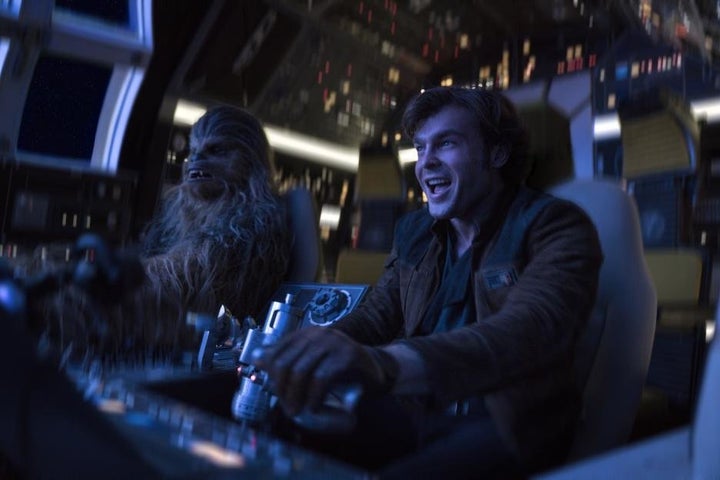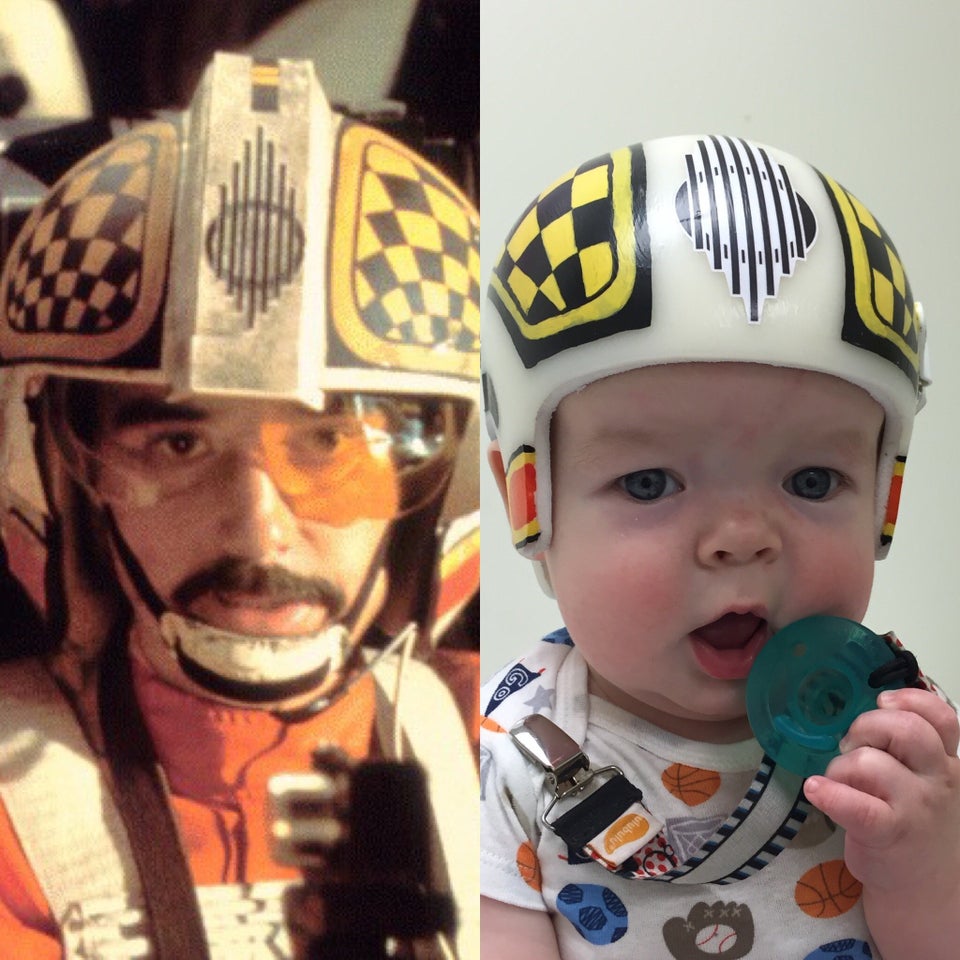Breakups are hard, especially when they affect the kids ― or your $250 million movie.
Disney was likely more worried about the latter when it parted ways with “Solo: A Star Wars Story” directors Phil Lord and Chris Miller in the middle of production last year. The studio brought on Ron Howard to salvage the project, and Howard brought with him a number of changes to the Han Solo origin flick.
Here are the details behind two of the movie’s biggest switch-ups:
How Dryden Vos Went From CGI Creature To Romantic Interest

In “Solo,” intergalactic gangster Dryden Vos was originally going to be a CGI character played by Michael K. Williams, but scheduling conflicts led to a casting change. Enter Paul Bettany.
“They took the opportunity to have a rethink when Michael K. Williams [was unavailable],” Bettany told HuffPost ahead of the movie’s premiere. “Michael K. Williams is a brilliant actor, and the risk you run when you’re a brilliant actor is you’re in demand constantly. So he was busy when they came to do reshoots. I’ve never run that risk, so I was gainfully unemployed. His misfortune was my fortune.”
You’d think certain time constraints might have amounted to Bettany’s character turning live action, but the actor said Howard had other reasons for the shift: He wanted to turn Vos into a rival that would come between Han (Alden Ehrenreich) and Qi’ra (Emilia Clarke).
“They thought [about] whether it should be a CG character or a more human-like character, and that was it really. Ron, I think in his vision, wanted him to be more of a sort of oligarch and perhaps some sort of romantic threat to Han,” he added.
It’s a bit of an uncomfortable relationship, Bettany admits.
“It’s a little creepy. I’m 46 years old, but I don’t think it’s really particularly ... I think it’s an ownership thing. I think he recognizes something in Qi’ra he thinks he can help develop, and that he can mentor. I just don’t think Qi’ra sees it the same way.”
With the change from CGI character to live action, it’s easy to assume Vos is just Bettany with a bunch of scars on his face. But the actor explained that Vos isn’t human, and that’s not scarring on his body.
It’s a skin pattern that flashes different colors “like an octopus” when his mood changes.
Viewers don’t get a whole lot of Vos’ backstory in “Solo,” but Bettany can speculate. “What I imagine is he came from a very similar upbringing to Han and Qi’ra and came up on the streets,” he said. “He’s El Chapo.”
How The Kessel Run Became The Kessel Run

One of the most debated and theorized upon conundrums in “Star Wars” is how Han Solo could’ve completed the Kessel Run in less than 12 parsecs ― as he claims to have done in the original trilogy.
This was one of the problems that writers Lawrence and his son Jonathan Kasdan set out to fix. Lawrence told HuffPost that the sequence that ended up in “Solo” went through “a million changes.”
“It was the hardest sequence in the movie to decide on because we knew we wanted to do it from the get-go,” he said. “But what is [a parsec] exactly? And what makes it as hard as it is? And how long [would it take]? Since a parsec is not a unit of time, it’s a unit of distance. And how do you clarify that thing?”
Like Lawrence noted, a parsec counts for distance, so Han Solo saying he did the Kessel Run ― an 18-parsec route used by smugglers ― in 12 parsecs is sort of like saying I ran a mile-long route in 200 feet.
“It’s a funny problem because it’s one of those throwaway things in the original ‘Star Wars’ that’s very much the essence of what’s so great about ‘Star Wars,’” Jonathan said. “To say, ‘Are you kidding? This is the ship that did the Kessel Run in 12 parsecs?’ and no one knows what any part of that sentence means.”
The younger Kasdan acknowledged how iconic the original Harrison Ford line about the Kessel Run was, but clarified: “The challenge of actually making that sentence coherent and making it thrilling is really a big one.”
“It’s one we wrestled with from day one,” he said.
According to the writers, the final take on the Kessel Run came together when Howard joined the production and made the scene feel more like a race car sequence.
“It got an added layer when Ron came in,” said Jonathan, “because he came out of shooting ‘Rush,’ having a great experience with ‘Rush,’ and really connecting to the idea of a race car driver and how can this be the story of a race car driver.”
The final sequence we see involves Han taking the Millennium Falcon “off road,” effectively taking a shortcut in the Kessel Run, avoiding some type of giant outer space squid and reaching the end in around 12 parsecs.
So it seems we have Howard to thank for the adrenaline rush of the Kessel Run, and the reinvigorated Vos character. Between Vos’ facial pattern and the giant space squid, it’s tough not to assume Howard has a special affinity for bringing cephalopods to “Star Wars,” too.
At least, that’s my inkling.

